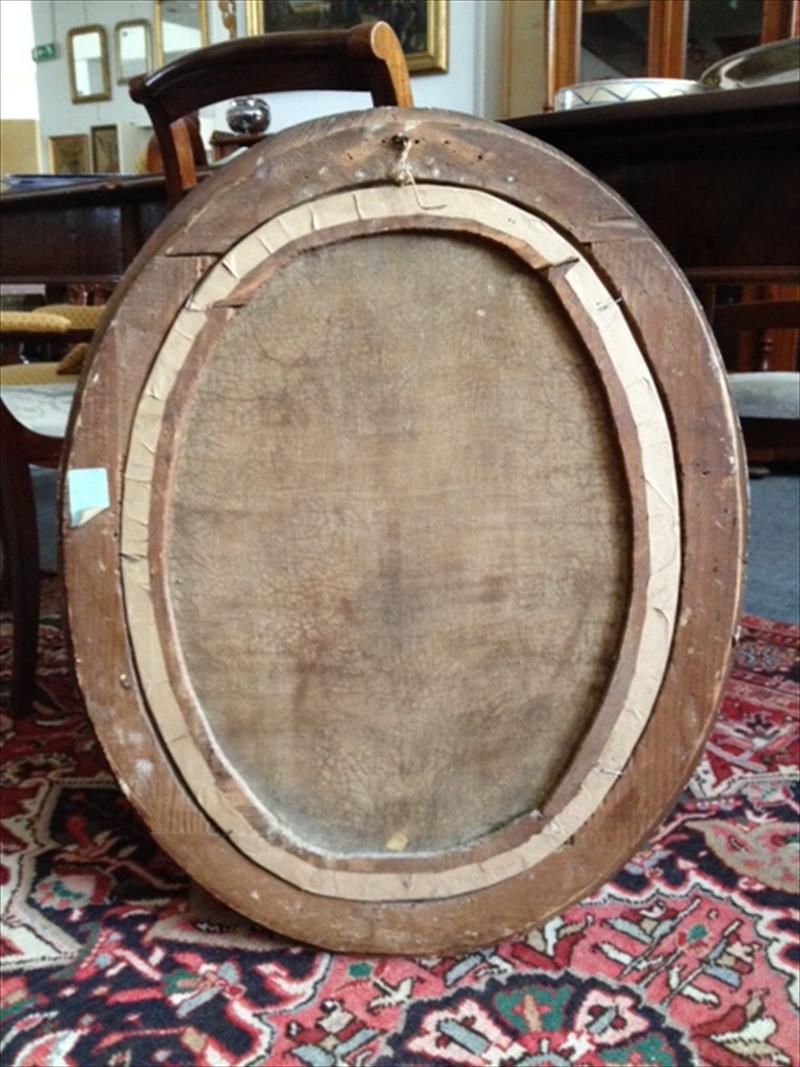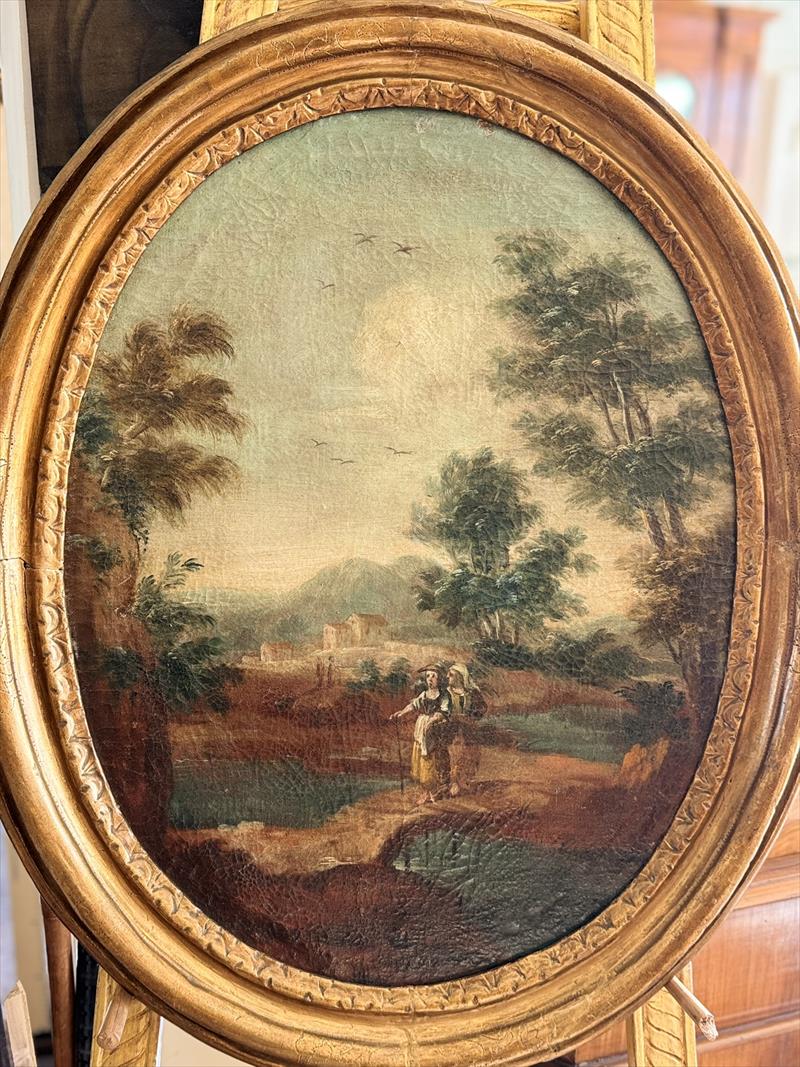Oil painting on canvas, oval in shape and set in its original giltwood frame with mecca finish, depicting an idealized 18th-century landscape in the style of the Rococo school active in Central Italy.
The scene unfolds through a sequence of atmospheric planes. In the foreground, a pair of wayfarers — likely peasants — crosses a small stone bridge and follows a path that disappears into the greenery.
The background is brought to life by a lush countryside: broad trees, a mountain rising on the horizon, and scattered rural buildings. A pale sky, filled with birds in flight, contributes to a sense of pastoral calm, shaped by a luminous sensibility that already hints at modernity.
The pictorial quality, subdued narrative tone, and refined atmospheric treatment clearly recall the work of Alessio De Marchis (1684–1752), a painter and stage designer of considerable renown, active between Rome, Umbria, and the Marche, and head of a flourishing workshop. De Marchis developed a new visual language in landscape painting, merging the legacy of Roman vedutismo with a more lyrical and poetic vision of nature — less descriptive, more evocative.
His work stands out for its rare ability to suggest the stillness of the landscape without theatrical effects, but through atmospheric layering, luminous harmony, and a sense of compositional balance. His “poetic views,” animated by faint human presences and diffused light, gained the favor of prominent patrons such as the noble Albani family, known for their role in the arts, and Pope Innocent XIII, who commissioned him for several decorative projects.
The handling of vegetation, the tonal modulation of the atmosphere, and the gentle fading of the distant mountains point to an artist trained within De Marchis’s workshop, where these traits were distinctive and consistently cultivated.
All elements suggest a significant original setting — possibly part of a decorative cycle or intended as a refined furnishing in a noble interior.
This is not just a fine painting — it’s a presence that changes the tone of a room. An oval window that opens onto a quiet world, made to be kept close, furnishing the space while calming the gaze. These are not mere objects: they’re a way of living. Being surrounded by true beauty is a simple luxury — and always worth it.
- Material: oil on canvas
- Size: cm 65 x 80
- Condition: Restored
- Period: Prima metà del '700
- State: Excellent conditions




